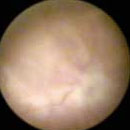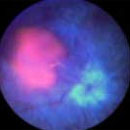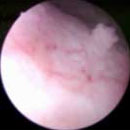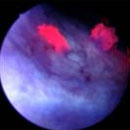How is bladder cancer diagnosed?
Where there are good reasons to suspect bladder cancer, cystoscopy (endoscopy of the bladder) is still the most reliable way of diagnosing a bladder tumour. Its reliability can be further improved by using fluorescence techniques (photodynamic diagnosis).
An ultrasound of the urinary tract is also routinely performed.
To check that the tumour has not spread to the upper urinary tract (kidneys, ureters) and where the tumour is very extensive locally, it is also necessary to perform a CT or MRI scan.
If your urine is found under a microscope to contain just a few isolated red blood cells, special chemical tests can be used to try to detect any cancer cells in the urine. These tests (e.g. NMP-22, BTA) are, however, not specific enough to be a substitute for cystoscopy.
Another test used to detect bladder cancer in urine is a molecular biology technique that detects cells which have undergone chromosomal changes (UroVysion). Again, cystoscopy will still be required.
What does ‘photodynamic diagnostics’ (PDD) mean and what advantages does this technique offer?
When one or more bladder tumours is removed using an endoscope, it is common for the tumour to subsequently regrow in the bladder (recurrence). It is easy to overlook small tumours during the initial operation. Tumours and tumour precursors (such as carcinomas in situ) often look no different from normal or inflamed bladder lining.
A team led by Prof. M. Kriegmair developed a procedure known as photodynamic diagnosis (PDD), which improves the diagnostic accuracy of endoscopy, particularly for aggressive early stage tumours (carcinomas in situ). This involves injecting a special dye into the bladder, which causes bladder tumours to fluoresce bright red under blue light. The introduction of this method has enabled earlier detection and therefore treatment of bladder tumours. An initial study in this field found that the technique reduces the number of patients with recurrent tumours.
We use PDD routinely in our clinic.
Example 1:
Detection of an aggressive bladder cancer precursor (carcinoma in situ)

under white light

under blue light (PDD)
Example 2:
Detection of a superficial bladder tumour

under white light

under blue light (PDD)







